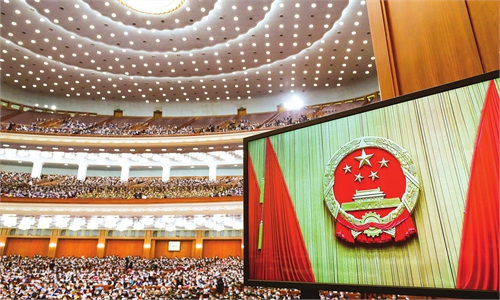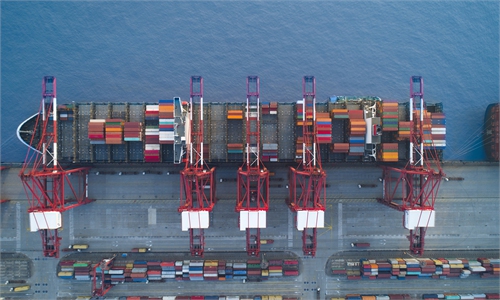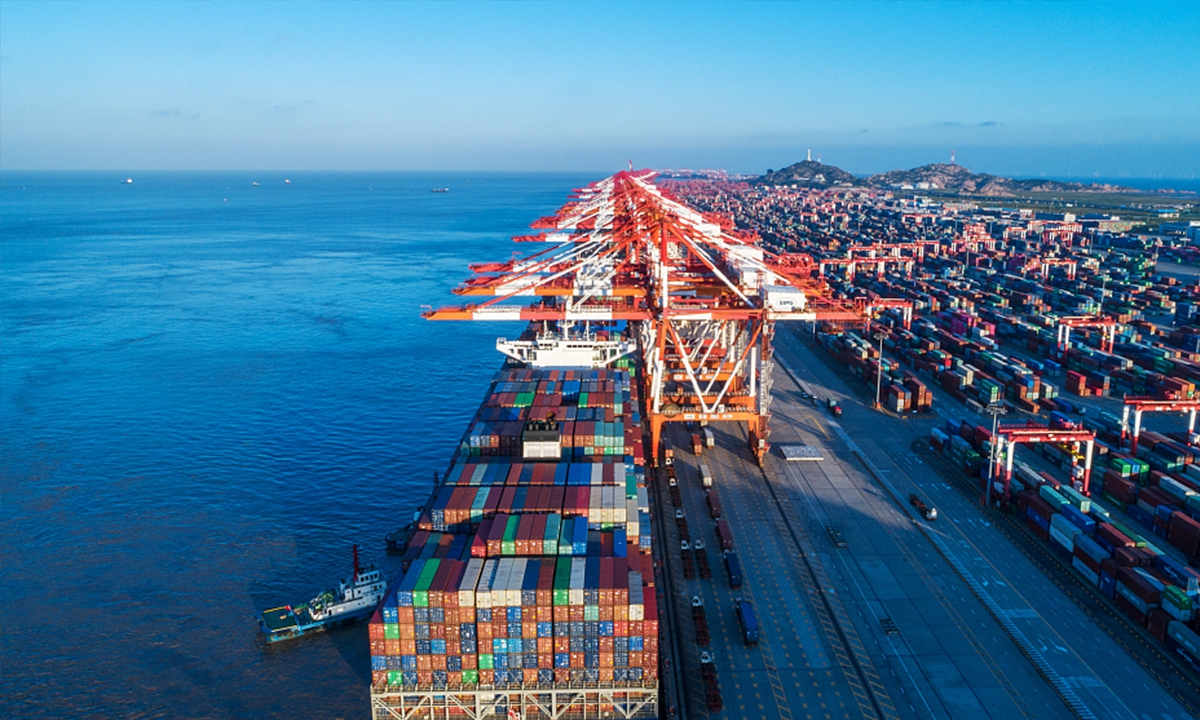
Photo: VCG
China's GDP grew by 18.3 percent year-on-year in the first quarter of 2021, the fastest in three decades, since the data was released, with key economic indicators all expanding at over 20 percent, setting an encouraging start for the year buoyed by a low base, soaring overseas demand and rebounding consumption at home.
The stellar data offers a glimpse into the strength of China's economic recovery, which has been retaking lost ground since the second half of 2020. The country is likely to record the highest growth among major economies and make the greatest contribution to the global economy in the first quarter, on top of the US, analysts noted.
Looking ahead, China's economy is forecast to keep a stable growth, but may enter "unchartered waters" in the second half of the year as geopolitical tensions keep developing and the marginal effect of global economic recovery has weakened.
Some analysts are upbeat about China's GDP which might gain by a double-digit growth in the second quarter. For the whole year, the growth rate could reach 9 percent, analysts said, well above the government-set goal of above 6 percent.
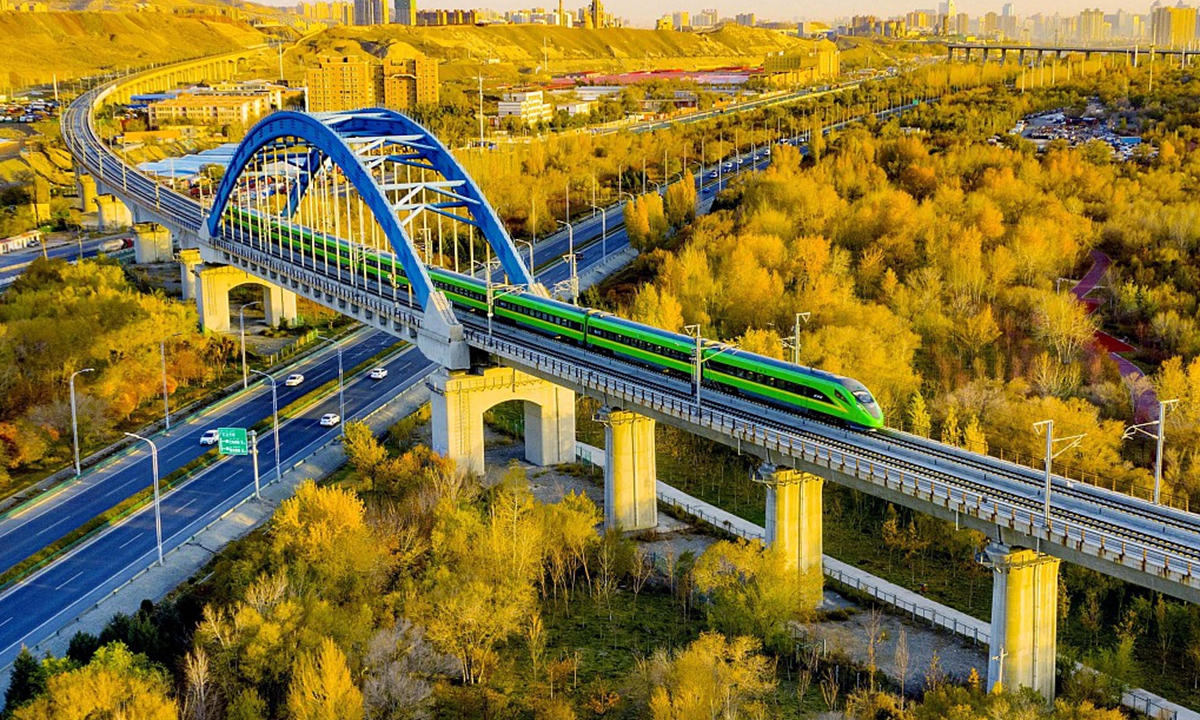
Photo:VCG
In the first three months, China's GDP grew 18.3 percent to 24.9 trillion yuan($3.82 trillion), compared with a 6.8-percent contraction in the same period last year when the economy came to a standstill amid the coronavirus lockdown.
Retail sales soared 33.9 percent, fixed-asset investment jumped 25.6 percent, and industrial production gained by over 24.5 percent, data released by the National Bureau of Statistics (NBS) showed on Friday.
The slew of indicators came in line with estimates, Liu Xuezhi, a senior macroeconomic analyst at Bank of Communications, told the Global Times on Friday.
The consumption rally, at a pace apparently faster than the rebound in factory activity, sets the economy for a strong comeback to pre-virus levels, the analyst reckoned.
In March alone, retail sales jumped 34.2 percent year-on-year, with the growth rate quickening 0.4 percentage points from the reading for the first two months, per NBS figures.
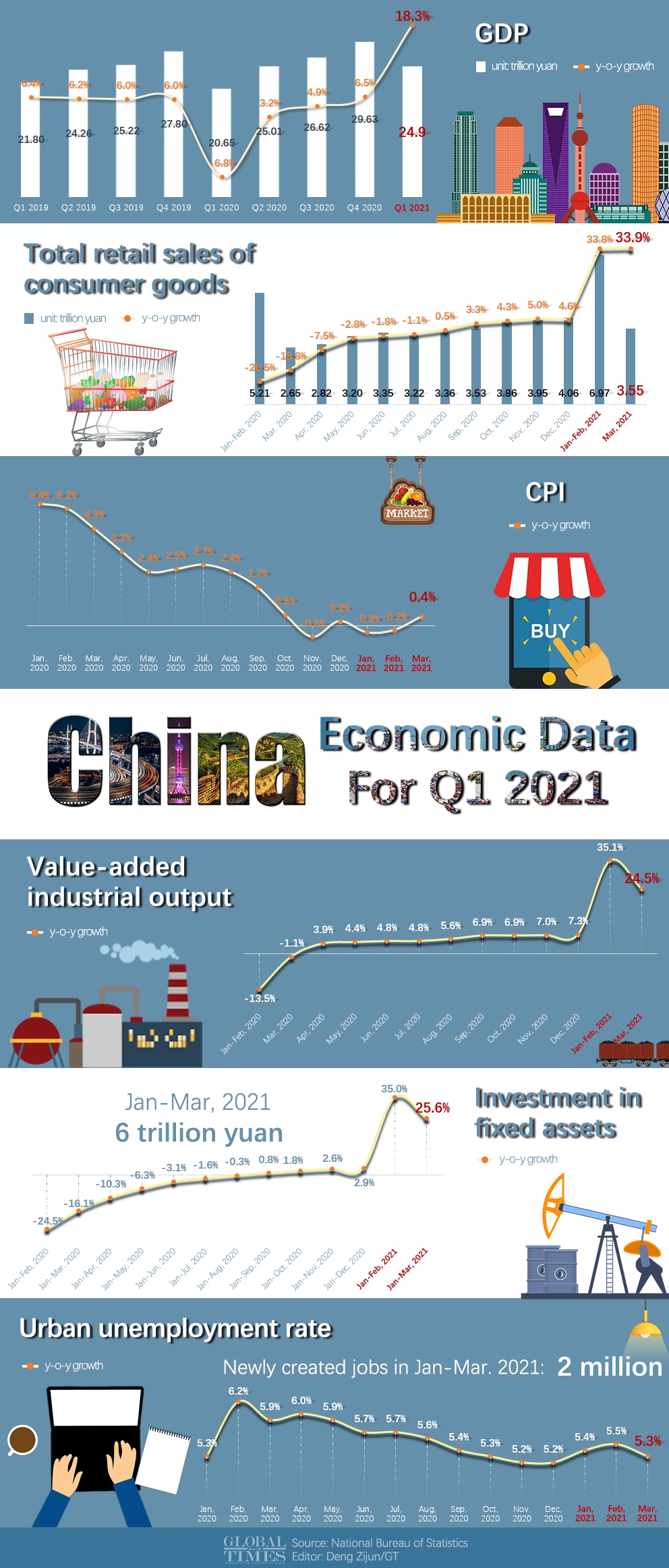
China economic data for Q1 2021 Infographic: Deng Zijun/GT
Industry observers said the data underscores a broadened recovery momentum, particularly in March, which marks a watershed in consumption from "divergent recovery" to "going full swing.""Millions of Chinese stayed at their working cities during the Spring Festival holidays, coupled with the resurgence of sporadic coronavirus cases, which curbed consumption to some extent in the first two months. With the rollout of a vaccination plan across the country, there was a turnaround in March," Lian Ping, head of the Zhixin Investment Research Institute, told the Global Times.
"With three minor vacations in the second quarter and consumer confidence being improved, consumption will continue to gain steam in the April-June period," Lian added.
"The pace of the economic recovery in the second and following quarters would rely more on the recovery of the service sector," global asset management giant Fidelity International said in a note sent to the Global Times on Friday.
According to domestic travel data during the Qingming Festival in early April, the number of travelers and hotel bookings posted a substantial increase compared with previous holiday breaks, indicating that "pent-up consumption demand may cause a retaliatory rebound," Fidelity International said, stressing more sustainable economic growth is still reliant on the recovery of incomes.
In a convincing sign of revenge spending, train tickets to some of the most popular destinations for the upcoming May Day holiday have been sold out the moment they became available, causing platforms to temporarily crash.
Analysts also highlighted the role of flooding overseas orders in shoring up China's industrial production acceleration in the first three months.
"The global economy seems to be walking out of the pandemic-induced recession, which will boost foreign demand for Chinese merchandise until at least June. This is in contrast to last year, when the recovery of the supply side outpaced that of demand," Tian Yun, vice director of the Beijing Economic Operation Association, told the Global Times.
Building on the momentum, China will continue to make the biggest contribution to the global economy, serving as an engine of growth for the world. Its gap with the US - the world's largest economy - is expected to further narrow, according to Tian, who expects China's economic scale to overtake that of the US in a decade and usher in a new world economic landscape.
In 2020, China's economic volume represented about 70 percent that of the US.
In a research note sent to the Global Times on Friday, ICBC International economists Cheng Shi and Wang Yuzhe wrote that the Chinese economy maintained a robust recovery momentum over the past quarter, with the first quarterly expansion reading averaging 5 percent in 2020-21.
The Chinese economy's lead over major developed economies, as measured by year-on-year growth, widened again to about 20 percent in the first quarter, an indication of the country's effective virus containment measures, the economists said, expecting China's intrinsically driven economic rebound to continue as the global recovery nears its peak and China's macroeconomic policy avoids a sharp turn.
"China is relatively further ahead than most economies in opening up and vaccinating its population. China began by inoculating key groups, including those engaged in handling imported cold-chain products, customs officers, medical workers, and those involved in public transport, to build a first line of immunity against importing the virus," Moody's said in an analysis report sent to the Global Times on Friday.
The head start is considered to prop up the broader Asia-Pacific region, factoring in its heavy reliance on Chinese demand, according to the rating agency, putting China's GDP growth at 8.2 percent this year.
But analysts noted that while China's industrial production has been back to the right track, the growth of fixed-investment and consumption have yet to bounce back to pre-virus levels despite a dramatic improvement from last year.
Lian noted that as global supply ability gradually resumed this year, some China-bound commodity orders may experience a withdrawal, or be diverted to other emerging economies, which may impact manufacturing activity.
"The GDP growth rates may come down quarter by quarter in 2021, due to the base variation and replacement effect, but it is highly likely that the annual growth rate will be over 10 percent as demands at home keep booming," Tian said.
In the fourth quarter of 2020, China's GDP grew 6.5 percent year-on-year. For the whole of 2020, its economy expanded by 2.3 percent, the only major economy to achieve a positive growth last year.
There are also concerns over the repercussions of rising producer prices on economic growth and the potential headwinds arising from geopolitical uncertainties.
But as Liu said, it's not yet the case that inflation rears its ugly head across the board. The country faces a cost-driven structural increase in prices, mainly due to rising commodity prices, such as crude oil, that is being fed through industrial production. It's not domestic demand-fueled price increases and there are no expectations for a substantial rise in asset prices either, according to Liu.
He also argued against the impact of external uncertainty on what he described as a domestic demand-buoyed economic recovery.

